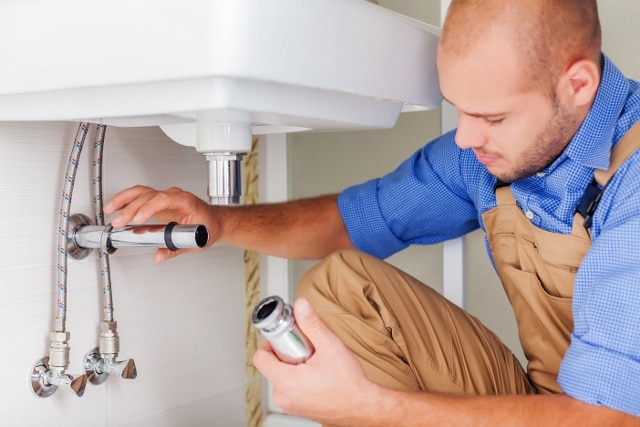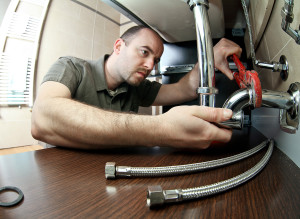Just how do you actually feel about DIY Plumbing Projects and When to Call a Professional?

Intro
Pipes concerns can vary from small inconveniences to significant migraines, usually triggering property owners to choose between dealing with the issue themselves or employing an expert plumbing. Understanding when to DIY and when to seek professional assistance can save time, money, and protect against possible catastrophes. This article explores the aspects to think about when making this vital choice.
Benefits of DIY Plumbing
Tackling pipes tasks yourself can be gratifying in a number of ways, specifically for easier tasks.
Complexity of Tasks
Some plumbing issues require specific expertise and tools past common house owner capacities. Messing up complicated troubles can cause further damages and pricey repair services.
Safety and security Problems
Working with plumbing systems involves risks such as exposure to water damages, capacity for electric threats, and dealing with devices inaccurately. Security safety measures have to be observed to stop mishaps and ensure reliable fixings.
Indicators to Call a Professional Plumbing Professional
Recognizing when a plumbing concern exceeds DIY capacities is critical to avoid getting worse troubles.
Indicators of Facility Problems
Examples include:
Prompt expert intervention is needed to attend to these concerns properly and lessen damage.
Do It Yourself Plumbing Tips
For successful DIY plumbing, it's important to be prepared with the right tools and follow correct treatments.
Standard Tools and Products
Secret devices for DIY plumbing:
Step-by-Step Guides
Clear instructions ensure safe and effective DIY repair services:
Choosing the Correct Time to Do It Yourself
Establishing when to deal with plumbing jobs on your own calls for assessing both the intricacy of the problem and personal comfort degrees.
Assessment Checklist
Take into consideration:
Cost Cost savings
DIY plumbing projects typically save money by avoiding professional service fees. Jobs like dealing with small leakages, replacing faucets, or installing brand-new showerheads are examples where property owners can handle repairs without working with a plumbing professional.
Ability Improvement
Taking part in do it yourself plumbing provides an opportunity to learn and improve practical skills. Standard jobs encourage house owners to understand their pipes systems much better and obtain self-confidence in handling tiny repair services independently.
Risks of DIY Plumbing
While do it yourself tasks provide benefits, particular risks should be thoroughly considered prior to attempting repair work.
When to Most Definitely Call a Professional
Certain situations demand instant expert attention to avoid considerable damage or safety and security dangers.
Emergency situation Circumstances
Instances include:
Searching for and Hiring a Specialist Plumbing Technician
Picking a qualified plumbing technician makes certain trusted service and peace of mind in resolving plumbing concerns.
Standards for Choice
Variables to consider:
Expense Evaluation: DIY vs. Specialist Solutions
Contrasting the monetary implications of DIY efforts versus expert plumbing services assists in making notified decisions.
Financial Considerations
Examine:
Conclusion
Choosing whether to DIY or call an expert plumber depends upon comprehending the complexity of plumbing problems and individual capacities. By evaluating the advantages and dangers, home owners can make educated selections that advertise reliable maintenance and secure their homes from plumbing catastrophes.
When to DIY and when to call a professional plumber
There are Australian laws and regulations that regulate plumbing work in Australia. This means that there are few home plumbing tasks that you can DIY. Besides, a lot can go wrong with DIY plumbing projects. However, there are also plumbing works that you can successfully DIY. Read on to know when to DIY and when to call a professional plumber.
You can learn more about the risks of DIY plumbing projects, projects requiring special caution, and illegal DIY plumbing works to avoid. This post concludes with the services of commercial plumbers and why getting expert help is essential.
Reasons to Attempt DIY Plumbing Projects
While it is often not advisable to perform DIY plumbing repairs, several pros of DIY plumbing projects can make them attractive.
Save costs
A significant reason for doing DIY plumbing jobs is to save costs. It is possible to save on labour charges and overall fees if you buy the needed tools and parts from local hardware stores and do the repairs yourself.
Gaining experience
You can gain some hands-on experience in basic plumbing repair if you watch online videos and attempt the repairs yourself.
Confidence boosting
You can boost your confidence and self-reliance skills by performing DIY plumbing repairs and installations yourself.
Risks of DIY Plumbing Projects
If something goes wrong with your DIY plumbing project, you may have unfavourable results that you may consider the cons of DIY plumbing.
For one, your home may get so extensively water-damaged that your home and contents insurance will not cover you. You will also have to spend more money to repair the water or sewage problem than you would otherwise spend for professional plumbing jobs. Besides, you may often spend more time on DIY plumbing work than an experienced plumber would spend. This is because you may not have the needed skill set. There are also related safety hazards and potential threats of DIY plumbing jobs that you may need to consider. Plumbing Issues You Can Fix Yourself
You can attempt DIY plumbing for plumbing issues such as replacing tap washers, installing shower heads or performing minor tap leak repairs. However, it would help if you invited licensed plumbers to fix complex leaking showers, effectively deal with blocked drains, or repair hot water systems. This is the best way to ensure these plumbing issues are correctly fixed, and the project is insured.
Fixing clogged or blocked drains
You may have clogged drains or need help with slow-draining showers. These are tasks that you can resolve yourself using several options. To fix blocked drains, you may use baking soda, plungers, or wire hangers. Meanwhile, you can take the preventive measure of installing filtration systems such as drain filters to help prevent drain clogs.
New faucet installations
It is possible to install a new faucet yourself. You would have to turn off the hot and cold water valves. Then, you can remove and fix the old faucet and replace it with the new one.
Leaky faucet repairs
While leaky faucet repairs are more technical than installations, you can also take some steps to fix them. Turning off water valves is the first step in draining water from plumbing systems. Next, you can use a washcloth to cover the drain and remove the decorative handles.
This will allow enough room to unscrew the nuts that attach the faucet handle to the stem. Your final step is to take out and replace the old washers and O-rings with the new duplicates.
Fixing running toilets
An occasional DIY solution for running toilets is to restore the flapper in the tank to its proper place.
Burst pipes
You may have issues with your exterior plumbing fixtures. It may simply be that your inbound or outbound pipes have worn out, or you may have burst pipes due to flooding or large tree roots.
You may also have frozen pipes. These are all instances when you need to call a professional plumber. They will perform pipe inspections to locate the problem and implement solutions such as pipe relining.
Interior plumbing repairs
It's usually time to call a competent plumber if you want to do plumbing repair work on floors, ceilings, or the walls of your building. They can also help you fix faulty showers and sinks.
Plumbing renovation
Major renovation projects or plumbing jobs such as bathroom remodelling and bathroom renovations require the services of a professional plumber. Likewise, you need a professional plumber to fix your kitchen sink or plumbing. They can help you get the required plumbing permits. At the same time, they know what building codes apply to such renovation projects.

I came across that piece of writing about When to DIY and When to Call a Professional Plumber while doing a search on the search engines. Sharing is good. Helping others is fun. Thank-you for your time invested reading it.
Further Details